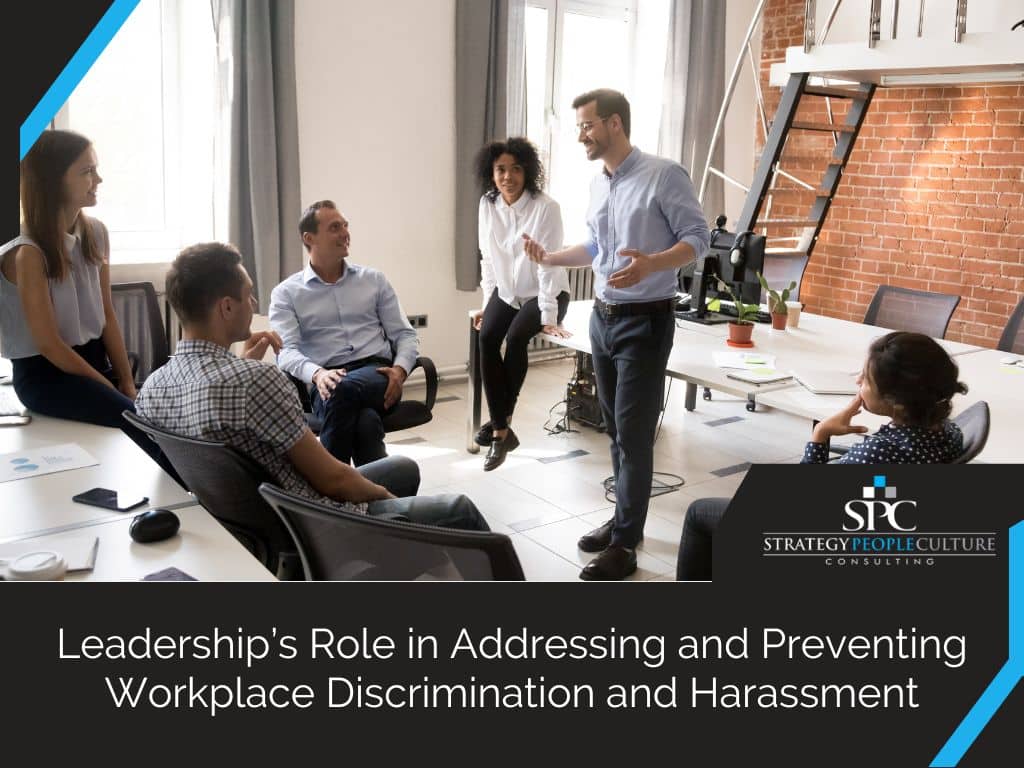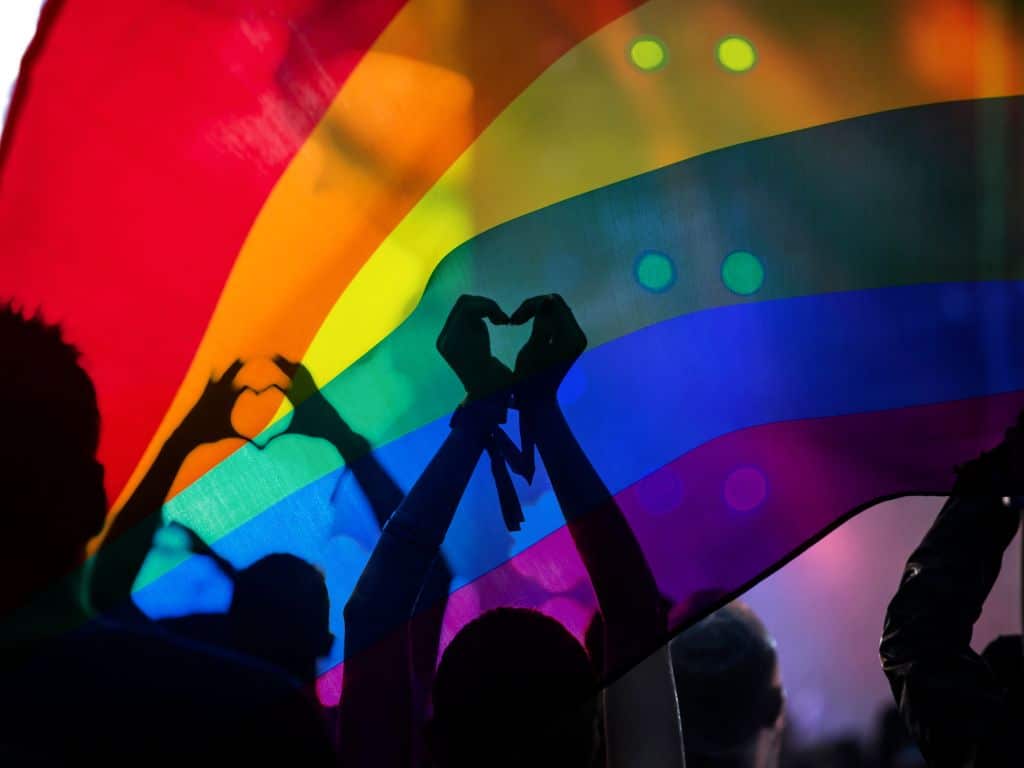Leadership’s Role in Addressing and Preventing Workplace Discrimination and Harassment

Workplace discrimination and harassment have been a challenge for organizations for centuries and, today, have become more visible than ever through social media and the speed of information. Despite progressive measures by legislatures, employers, and enforcement agencies, such issues continue to pervade workplaces, negatively affecting employees and companies alike.
While many people differ in their opinions as to how big an issue this is in the workplace, the numbers suggest this is a very real and significant problem. In fact, 55% of workers report having faced discrimination where they work, according to All Voices’ report titled “The State of Workplace Discrimination 2021.” In the fiscal year 2022, the EEOC received 73,485 harassment complaints, out of which 27% were filed for sexual harassment and 28.6% for racial discrimination.
And it’s not just that one report. Glassdoor found that 61% of U.S. workers have either experienced or witnessed discrimination. When we zero in on our Black and Hispanic colleagues, the picture is even more stark – one in four report experiencing discrimination in their workplace just last year.
And let’s not forget about our LGBTQ+ community. The Williams Institute discovered that almost half of LGBTQ workers felt they were treated unfairly at work, and for transgender employees, that number is even higher at 48.8%. The numbers make it clear having these types of conversations is so important.
The role of leadership in preventing and addressing such issues cannot be overstated. Leaders possess the ability to shape the workplace environment and organizational culture. This blog post aims to delve into the significance of leadership in mitigating workplace discrimination and harassment. We will explore the definitions and impacts of these issues, discuss the role of leadership, suggest strategies and tactics for leaders, share real-life examples of effective leadership, and finally, highlight the role of executive coaching in addressing these concerns.
The Ultimate Goal

Operating a successful business is the ultimate goal for any business, regardless of how you define success. Regardless of your definition, creating a safe, diverse, and harmonious work environment is usually a helpful contributor to achieving peak workplace productivity and success. Addressing discrimination and harassment, whether for moral or business reasons, is key to minimizing risk and improving business outcomes. As a leader, it’s important to take proactive steps to support anti-discrimination and harassment initiatives and champion a positive work culture.
To effectively address and prevent discrimination and harassment in the workplace, leaders must first understand what harassment and discrimination looks like and the impact this type of behavior can have. So, before diving into the strategies and tools, let’s explore some common forms of discrimination and harassment.
Understanding Workplace Discrimination and Harassment

Workplace discrimination refers to unfair treatment based on an individual’s “protected classification” some of which is their race, color, religion, sex, national origin, age, disability, or genetic information. This comes in the form of unwelcome or offensive behavior directed at an individual (or group of people) on the basis of these protected characteristics.
Common types of discrimination and harassment in the workplace include:
- Racial and Ethnic Discrimination: This occurs when an employee is treated differently due to their race, nationality, or ethnicity.
- Sexual Discrimination and Harassment: This involves unwanted sexual advances, comments, or behaviors that create an intimidating, hostile, or offensive work environment.
- Age Discrimination: This happens when an employee is treated unfavorably because of their age.
- Disability Discrimination: This involves treating employees unfavorably due to their real or perceived disability.
- Religious Discrimination: This occurs when employees are treated differently because of their religious beliefs or practices.
- Gender Identity and Sexual Orientation Discrimination: This happens when employees are discriminated against based on their gender identity or sexual orientation.
The Impact of Workplace Discrimination and Harassment

The negative effects of discrimination and harassment on employees are far-reaching. These issues can lead to increased stress, decreased productivity, and mental health issues, contributing to a psychologically unsafe work environment for employees. Employees subjected to such conditions may experience anxiety, depression, and a lower sense of self-worth, which can significantly affect their performance and engagement at work.
For organizations, the consequences are equally detrimental. Discrimination and harassment can lead to increased turnover, damage to reputation, higher expenses in terms of litigation and settlement costs, and other potential legal consequences. This not only affects the financial health of the company but also impairs its ability to attract and retain top talent.
The Role of Leadership in Addressing Discrimination and Harassment

Leaders have a profound influence on workplace culture. They set the tone for acceptable behavior and can create an environment that either enables or deters discrimination and harassment. The way people perceive their treatment significantly impacts the organizational culture. Have you been part of any discussion around DEI? Well, discrimination and harassment often undermine efforts to achieve a positive and inclusive culture.
Leaders can either contribute to these problems by turning a blind eye or help prevent them by fostering a culture of respect and inclusivity.
There are several measures that leaders can take to prevent discrimination and harassment. These include:
- Creating clear policies: Leaders should establish clear policies that prohibit discrimination and harassment, outlining potential consequences for violations.
- Providing training: Regular training sessions can help employees understand what constitutes discrimination and harassment and how to report such issues.
- Encouraging open communication: Leaders should foster an environment where employees feel comfortable speaking up about their concerns without fear of retaliation.
- Leading by example: Leaders should model the behavior they expect from their team, demonstrating respect and fairness in their interactions.
- Handling complaints effectively: Leaders must take all complaints seriously, conducting thorough investigations and ensuring that appropriate action is taken.
- Hire an executive coach: An experienced executive coach can help leaders better navigate sensitive issues, foster a more inclusive workplace, and provide effective strategies and tools to support diversity and equality initiatives.
Each of these strategies, when implemented correctly, can significantly reduce instances of discrimination and harassment, fostering a healthier, more inclusive workplace.
Examples of Effective Leadership Against Discrimination and Harassment

While it’s crucial to understand the potential pitfalls when addressing discrimination and harassment, let’s consider some hypothetical yet relevant scenarios where leadership plays a pivotal role in effectively handling such situations.
- Consider a company where an employee, John, who is a person with a disability, is struggling with certain tasks due to his condition. An effective leader in this scenario would be one who recognizes John’s challenges and works with him to identify and implement reasonable accommodations, thereby ensuring that John can perform his duties without disadvantage. This could include investing in assistive technologies or restructuring his tasks to better suit his abilities, while still meeting the needs of the organization.
- In a different company, an employee named Maria faces racial discrimination, which has negatively impacted her career progression. An effective leader in this situation would not only address the immediate issue by investigating and dealing with the individuals involved but would also take steps to prevent such occurrences in the future. This could involve implementing unconscious bias training, developing clear anti-discrimination policies, and promoting a culture of inclusivity.
- Lastly, consider a situation where an employee, Lisa, faces gender discrimination, overlooked for promotions in favor of less qualified male colleagues. An effective leader, in this case, would ensure that the promotion process is fair and transparent and that decisions are based solely on merit. They might also implement initiatives to support women’s career development within the company.
These scenarios underline the importance of leadership in addressing and preventing discrimination and harassment. Effective leaders are those who not only respond appropriately to incidents of discrimination and harassment but also proactively create an environment where such behaviors are not tolerated.
The Role of Executive Coaching in Addressing Discrimination and Harassment

Leadership is crucial in preventing and addressing discrimination and harassment in the workplace. However, leaders themselves often need support and guidance in tackling these complex issues. This is where executive coaching comes in.
Executive coaching provides an avenue for leaders to receive personalized training and feedback, challenging them to reflect on their behavior and approach to leadership. Coaches can help leaders recognize any unconscious biases they may have and provide strategies to mitigate them. They can also guide leaders in developing effective policies and procedures to prevent and address discrimination and harassment.
Moreover, executive coaching can equip leaders with the skills to foster an inclusive and respectful work environment. Coaches can help leaders improve their communication skills, enabling them to effectively address issues of discrimination and harassment and encourage open dialogue about these issues within their teams.
Finally, executive coaching can offer immense benefits for organizations. By developing more competent, empathetic, and inclusive leaders, organizations can foster a positive workplace culture, improve employee satisfaction and productivity, and reduce legal risks associated with discrimination and harassment.
Conclusion
In conclusion, leadership plays a vital role in addressing and preventing workplace discrimination and harassment. However, this is not a task that leaders should undertake alone. With the support of executive coaching and a committed effort to create an inclusive work environment, organizations can significantly reduce instances of discrimination and harassment and create a better workplace for all.
Are you a leader looking to build an inclusive, respectful work culture? Strategy People Culture is here to help. With our executive coaching services, you’ll receive personalized guidance and support, helping you develop the skills necessary to address and prevent discrimination and harassment in your organization.
Take the first step towards creating a more inclusive and equitable workplace. Call us at (833) 762-5772 or schedule a consultation today. We look forward to partnering with you to foster a positive workplace culture where everyone feels valued and respected.
